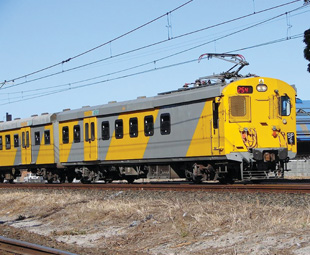Today, Sepp Blatter. Tomorrow … ?

What does Argentinian football legend Diego Maradona have in common with transport union SATAWU? Maradona wanted Sepp Blatter out, while SATAWU wants the Passenger Rail Agency of South Africa (PRASA) board out
South African commentators have been quick to draw parallels between the FIFA debacle and the lack of accountability that now dominates the way South Africa is being run.
In the field of transport, classic examples are e-tolls, the Gautrain and bus rapid transit (BRT) schemes – all of which were also turbocharged by the 2010 Soccer World Cup, as well as being based on questionable “research” and overblown patronage figures.
However, the R123-billion PRASA fleet-renewal programme is another potential transport crisis in the making. According to reports, it’s the biggest of its kind in the world, involving 7 224 coaches.
Already it is off to a shaky start, with SATAWU calling for the “immediate dissolution” of the PRASA board (Business Day, May, 28). The union specifically questions the fitness of PRASA’s chairman to serve in public office. No directors are spared – the union describes the board as “illegitimate and illegal”.
SATAWU is concerned mainly about job losses, and it is being supported by angry contractors/suppliers to the fleet-renewal programme, that have been asked by PRASA to reduce their prices and to supply lower volumes than those called for in the initial contract.
(By the way, these reports were dismissed two days later by PRASA as “poorly researched”, so I’ll leave it to the union, the suppliers and PRASA to fight it out.)
However, the red lights are flashing – an appropriate metaphor given some recent rail incidents. The motivation for the entire scheme is, in my opinion, being mismanaged by both the Treasury and the Department of Transport.
How did we get to the overall total of 7 224 coaches? It’s a suspiciously precise number. I guess a clerk was told to take the current fleet of, say 3 500 coaches and increase it by, say, one percent per year for the next thirty years. He or she arrived at 7 223,36 and, being a well-trained student of transport economics, correctly rounded it up to 7 224.
Jokes aside, has any attempt been made to reconcile this figure with any of the regional/provincial transport plans?
Take Gauteng, which, according to the 25-year Gauteng Transport Plan (GTP), makes up 48 percent of PRASA’s operations in South Africa. The GTP consists of 1 400 pages, of which a miserly 71 pages (Appendix F) are devoted to public transport.
The six-odd pages involving PRASA refer mainly to expansion into areas not currently served by rail, which, presumably, will require at least a few hundred extra coaches.
These include new rail construction projects amounting to no less than 346 km (Appendix F, page 66), estimated to cost R121 billion at 2012 prices. About half of this is a vague reference to “rapid rail” (presumably Gautrain) expansion.
The GTP then contradicts itself three pages later, where it quotes international research showing that population densities in Gauteng are so low that they only justify a “basic” bus service, not even a “premium” (presumably BRT) bus, and even less a rail service. Stop press: Appendix F was quietly taken off the GTP website during June. Why am I not surprised?
Another distortion is the artificially low PRASA fare structure. Government documents refer to the “ravages of apartheid”, but no attempt has been made since 1994 to equalise public transport fares so that rail, bus and minibus-taxi fares are roughly similar for the same distance. Have any transport plans bothered to “model” the effects of equal fares?
Diego asked Blatter: “Where have you been for the last four terms?” The same question should be asked of the present government, which can consider itself lucky that public transport users have been so accommodating over a period of more than 20 years.
The simple conclusion is that we don’t need any PRASA or Gautrain rail “expansion”. For rail to grow, it needs to be strongly supported by pre-existing improved road services. Rail should focus on fixing what is already there, failing which it will continue to lose market share.
There is no need for 7 224 new coaches – simply stick with the interim order for
3 600 coaches (which we might not even get) and immediately start fixing basic bus and taxi transport throughout South Africa.
At the time of going to print it was unclear whether Blatter had resigned. If he finally resigns, Diego should be happy. When will we be able to say the same for public transport users in South Africa?
Vaughan Mostert developed a love for public transport early in life, which led to a lifelong academic interest in the subject. He recently retired as a senior lecturer from the Department of Transport and Supply Chain Management at the University of Johannesburg. Through Hopping Off, Mostert leaves readers with some parting food for thought as he continues his push for change in the local public transport industry.
Published by
Focus on Transport
focusmagsa




